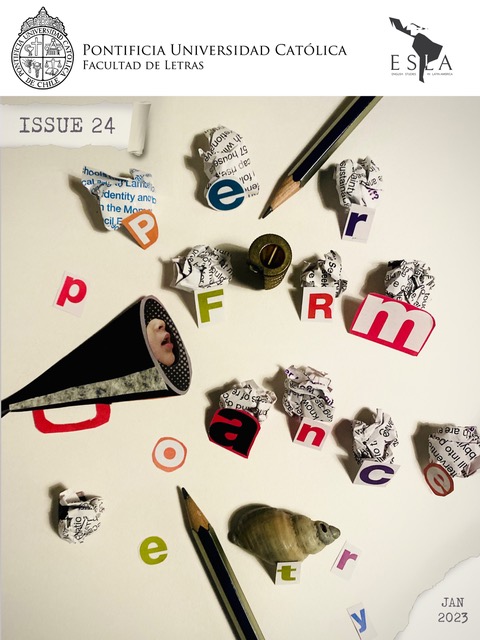‘Song-Song Stare’: Maggie O’Sullivan’s Ritual Listening in Poetry and Performance
DOI:
https://doi.org/10.7764/ESLA.58585Keywords:
Ritual, performance, performance poetry, poetry, poetics, Maggie O’Sullivan, embodied practice, creative writing, experimental poetry, ecopoetics, intermedia, live poetry, embodied methodology, British Avant Garde poetryAbstract
Drawing from research in the field of creative writing, this poetics essay explores performance and ritual in the work of Maggie O’Sullivan. I focus on sound poetry and listening to explore some of O’Sullivan’s ritual techniques of transformation. Following O’Sullivan’s ‘mattering of material,’ I elucidate some of the processes of ritual, embodiment and ecological relation which she makes use of in her poems and performances. I bring concepts from ritual theory and performance studies into play with O’Sullivan’s poems and sound texts. Ritual techniques are used by O’Sullivan to transform the material of language and open up a liminal potential of poesis, a making anew in language or a sensual re-enchantment. These ritual techniques include fragmentation and re-composition of language into new material, the use of rhythm and repetition in a poem to create a resonant ‘pulsing’ and approaches which emphasise the embodied connections between those present in the space of the poem and their ecological interrelation. O’Sullivan makes poetry a medium for transformation where language becomes ‘an active physical presence in the world’, creating the possibility in performance of a liminal ‘space of undiminishment’, a poesis which opens our ears to ‘other-than-(as well as human)-sentience’ (in Olsen 204). The essay asks what new openings might be possible in the field between embodied arts and poetry.
Downloads
Downloads
Published
How to Cite
Issue
Section
License

This work is licensed under a Creative Commons Attribution-NonCommercial-NoDerivatives 4.0 International License.


